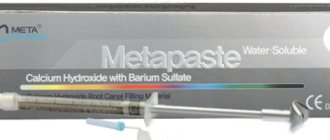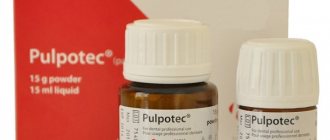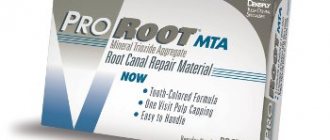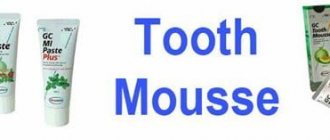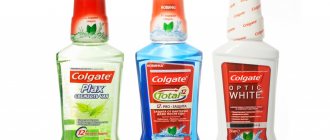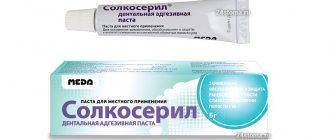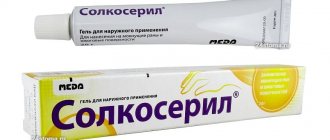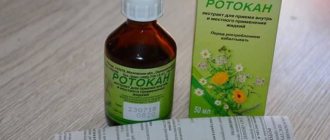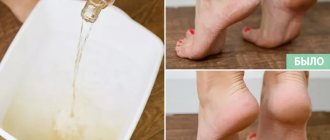Indications for use
The ointment copes well with inflammatory processes and draws out pus. The main indication for use is the formation of purulent wounds.
The product treats wounds and boils. Also used for severe forms of hemorrhoids, herpes, purulent skin rashes. Can be used as local therapy for inflamed lymph nodes.
The patient is prescribed anti-allergy medications, vitamins, and calcium gluconate. In advanced cases, an operation is performed to open the pustules and carry out antibacterial treatment.
Some doctors prescribe ointment for a runny nose and sinusitis, when the problems are caused by a microbial infection.
The ointment showed excellent results in the treatment of purulent formations in the oral cavity. Levomekol will help fight stomatitis, periodontal disease, and inflammatory reactions. Also used as a pain reliever when removing or inserting teeth.
Mode of application
After tooth extraction, Levomekol should be used strictly according to the doctor’s recommendation . The ointment is prescribed for children from three years of age and adults. Levomekol should be used immediately after tooth extraction, on the first day, and in the next three days until the symptoms of the inflammatory process are eliminated.
How to use the ointment after tooth extraction:
- fold sterile gauze or cotton wool several times;
- Apply a small amount of Levomekol to a cotton or gauze swab;
- Apply the swab to the site of tooth extraction and squeeze your jaw.
You should keep the tampon with the medicine in place for as long as possible. A tampon with a fresh portion of Levomekol is replaced once a day. To speed up wound healing, the doctor may additionally recommend rinsing with furatsilin solution, oak bark decoction and other anti-inflammatory and antiseptic solutions before applying a tampon with Levomekol.
Without using a tampon, you can put Levomekol into the hole after tooth extraction. To do this, it is not recommended to apply Levomekol to your finger - you need to immediately squeeze a small amount of ointment from the tube onto the site of tooth extraction. The procedure is repeated up to four times a day.
Instructions for use
The ointment can be used by adults and children from 3 years of age. The product is applied to the open wound using sterile cotton wool and secured with a bandage. You can inject ointment into a purulent wound using a syringe.
The dressing must be done every day until the pus is completely removed from the wound.
If the affected surface is large enough, then the permissible dose per day should not be more than 3 g.
The ointment should be used within 4 days from the moment of infection. In severe conditions, the course of treatment can be extended to a week. With prolonged use, osmotic shock may occur in healthy cells.
For sinusitis, ear inflammation and runny nose
If you have a runny nose, soak a cotton pad with ointment and insert it into your nasal passages. If possible, keep for 3-4 hours. For ear inflammation and sinusitis, you need to make a tourniquet out of gauze, soak it in ointment and insert it into the ear for 8-12 hours.
In dentistry
When a tooth is removed and the oral mucosa is damaged, you need to rub the ointment with light circular movements into the problem areas. You can use the ointment no more than 3 times a day.
For hemorrhoids
Before applying the product, you need to rinse the anal area with water at room temperature and dry with a towel. After this, you can apply the ointment.
For burns
Levomekol has proven itself well for burns of varying severity. In severe cases, the ointment is only an aid and cannot replace general treatment. Before applying the ointment, the affected area of the body should be washed and covered with a napkin treated with ointment. The bandage needs to be changed 4 times a day.
For acne
Acne appears as a result of bacterial and infectious infection. Dermatologists recommend applying a thin layer of ointment to small rashes and leaving for 3-4 hours. Afterwards, rinse with water. In this way, acne can be treated for no longer than 12-14 days. In case of isolated rashes, it is better to cover the treated area with a gauze bandage.
The appearance of a “dry socket” after tooth extraction
Dry socket after tooth extraction is one of the complications of the dental procedure. Dry socket may affect older people, smokers, and women taking birth control pills. Sometimes a blood clot does not form at the site of the tooth and bone may be exposed, which slows down healing. 3-4 days after the dental procedure, a dull pain appears, which can be either acute or tolerable. The pain often seems to radiate towards the ear. A dry socket can cause bad breath or a taste in the mouth. Such a hole looks like this: there is no blood or pus on it, but the bone is exposed. In this case, you should consult a doctor to treat dry socket. To relieve pain, the doctor applies a bandage soaked in medicine to the dry socket.
Up to contents
special instructions
It is better to avoid simultaneous use with drugs that inhibit hematopoiesis.
After using the product, the reactive susceptibility of the skin may increase, which is why hypersensitive reactions may then appear at the time of using the ointment.
If you need to use the ointment for longer than a month, you will need to take a peripheral blood test.
The drug does not in any way affect the ability to drive a vehicle or operate other dangerous machinery.
There are no cases of negative effects when taken in parallel with other drugs.
If the ointment gets on the mucous membranes, you need to rinse them well with water. If the ointment gets inside, you need to rinse the stomach with activated charcoal.
Efficacy of the drug
Levomekol will disinfect the treatment area and prevent infection from penetrating into the gum canals remaining from the roots. The ointment will effectively prevent dental defects caused by infection of the socket after tooth extraction:
- flux;
- alveolitis;
- pain;
- osteomyelitis.
After complex dental operations to remove several teeth or wisdom teeth, Levomekol will promote rapid healing of the gums.
In preparation for implantation and after removal of a wisdom tooth, Levomekol will prevent not only infection of the gums and canals, but also the mucous membranes located near the maxillary sinuses during removal in the upper jaw.
After tooth extraction
After tooth extraction: how to speed up recovery
Tooth extraction can be indicated even for those who take care of hygiene, regularly brush their teeth, and are not susceptible to any dental diseases.
The reason for extraction may be improper growth of teeth - dystopic or impacted elements of the dentition must be removed. Supernumerary teeth should always be removed. As for teeth affected by caries or moving elements in patients with periodontal disease, the decision is made individually, based on the specifics of the clinical case. In this publication we talk about what to do after tooth extraction - how to properly care for the oral cavity, what medications to take, what to eat, whether you can drink alcohol, smoke and play sports.
How to eat properly?
After tooth extraction, the restriction on food intake lasts for a very short time. In fact, you will be able to eat your next meal almost immediately after returning home from the dental clinic. It is recommended to abstain from food for two, maximum, three hours. After this, it’s time to replenish the energy and nutrients that are needed for quick and complete healing of the wound.
You can drink even earlier - within an hour and a half after tooth extraction, you can drink a glass of mineral water or yogurt. We recommend giving up sweet soda, tea and coffee for a couple of days.
The next important question is what to eat? It is advisable to eat liquid or pureed food. The chewing load should be kept to a minimum, and therefore it is better to avoid beef steak, which requires careful and prolonged chewing. A good choice would be soup, mashed potatoes, oatmeal, omelet, cottage cheese, buckwheat porridge. If you want to add meat to your diet, first pass it through a meat grinder (in finished form).
Now let's talk about how to eat correctly? The recommendation is logical and expected - you need to chew food on the healthy side. Food particles should not get into the wound or damage the blood clot, which is an important element of healing.
When to remove a tampon?
After dental extraction, the dentist will apply a gauze pad to the wound. This will reduce bleeding and promote blood clot formation. The problem is that very soon this tampon will turn into an ideal source of nutrients for microorganisms living in the oral cavity. Simply put, it will become a breeding ground for infection.
If the tampon has not yet been removed at the dental clinic, do so immediately after returning home. Just remove the tampon carefully, otherwise there is a high risk of tearing out a blood clot from the hole. In order to properly remove a tampon, pull it not strictly up (or down), but to the side, with smooth loosening movements. This way you are guaranteed to avoid troubles that are possible when removing a clot from the hole.
What should I do if, after removing the tampon, blood continues to come out of the socket? Make the same tampon yourself, soak it in an antiseptic and apply it to the gum in the area of the hole for a couple of hours. For hypertensive patients, we recommend measuring your blood pressure. High blood pressure can cause bleeding from the socket, and therefore, if the systolic or diastolic pressure increases, you should take antihypertensive drugs prescribed by your cardiologist.
How to reduce swelling?
Simple tooth extraction is accompanied by minimal tissue trauma, but in the process of complex extraction, bone damage is much more noticeable to the body. The response to this damage may be swelling of the gums, cheeks and even half of the face on the side of the operation (tooth extraction - a surgical dental procedure).
To minimize swelling, apply cold compresses to your cheek. It's important not to overdo it here. Applications should be short-term - no longer than five minutes. Then you should take a break for about 10-20 minutes and apply the cold to your cheek again. Repeat the procedure 3-5 times. Please note that compresses are effective only in the first hours after dental extraction; there is no point in using them later.
An effective measure against edema is to take antihistamines, which are available without a prescription. These medications reduce the release of inflammatory mediators (the main one being histamine) and thereby prevent the development of edema. You need to take antihistamines (diazolin, suprastin) once a day for two or three days.
What you definitely should not do after tooth extraction is to heat the area of the surgical wound. Do not apply heating pads to your face or take a hot bath or hot shower. Of course, visiting the bathhouse until complete healing is also prohibited.
What should smokers do?
It is better to abstain from smoking for at least 2-3 days, but few smokers will be able to follow such recommendations after tooth extraction. For those who need to get their regular dose of nicotine, we advise you to wait at least three hours. Nicotine provokes a narrowing of peripheral blood vessels, which impairs the delivery of oxygen and nutrients and slows down the process of tissue regeneration in the socket area.
Alcohol after tooth extraction
Tooth extraction surgery becomes very stressful for most patients. A common way to calm nerves for many is a small portion of alcohol. Is such a measure acceptable after dental extraction?
If the dentist has prescribed a preventive (prophylactic) course of antibiotics, you must abstain from alcoholic beverages throughout the entire period of taking antibacterial drugs. If antibiotics were not prescribed after tooth extraction, you can drink alcohol on the second or third day. It turns out that to relieve stress, in any case, you will have to look for other methods. A good choice is tablets (not tinctures!) herbal-based sedatives, available in a large assortment in pharmacies.
What medications should I take?
Medicines are prescribed by the dentist who performed the extraction. The goal of drug therapy is to reduce pain, prevent inflammation and infection of the socket, and minimize swelling.
Pain after surgery appears 2-3 hours later, when the anesthesia wears off. As a rule, the pain is not very severe, but there is no need to endure it. To reduce discomfort, the doctor will prescribe potent medications. Ketanov in ampoules or its analogues are often prescribed. These drugs, in addition to the analgesic effect, have a strong anti-inflammatory and anti-exudative effect. They not only relieve pain, but also reduce swelling and inflammatory reaction in the socket area.
Antibiotics
Antibiotics after tooth extraction are prescribed in cases where the operation was performed against the background of inflammation, or when there are untreated teeth in the oral cavity that are a source of infection. Simply put, when the risk of wound infection is high. After a complex extraction, including after the removal of a wisdom tooth, antibiotics are almost always prescribed.
The doctor may prescribe you antibiotics in the form of tablets/capsules or solution for intramuscular injection. Antibiotics such as Cefazolin, Cifran, Amoxiclav are often used. It is very important to adhere to the dosages prescribed by the dental surgeon. It is highly undesirable to exceed or independently reduce doses.
The preventive course of antibacterial drugs is designed for 5-7 days. Usually the patient's condition returns to normal by the end of this period. If in the first days, in addition to swelling and pain, you may be concerned about an increase in body temperature up to 38-38.5 degrees, then after a week the symptoms of the postoperative period disappear.
If, a week after extraction, you continue to experience pain, fever, bleeding from the socket, or other symptoms, make an appointment with your doctor!
To reduce swelling, you can take antihistamines, which have already been mentioned. Do not use acetylsalicylic acid or other NSAID drugs that reduce blood clotting. Patients with cardiac pathology who are taking anticoagulants for health reasons should discuss this issue in detail with their doctor.
How to care for your oral cavity?
To prevent infection, the dentist will prescribe not only antibiotics, but also antiseptic solutions that need to be used to rinse the mouth. You should always rinse your mouth with antiseptics, even when the patient is not prescribed antibiotics. After the removal of a wisdom tooth, the recommendation is as relevant as after the extraction of a diseased element of the dentition.
You need to rinse your mouth very carefully, otherwise you may accidentally wash out a blood clot from the postoperative hole. In fact, we are not talking about rinsing, but about a kind of bath with an antiseptic drug (most often, dentists prescribe a solution of chlorhexidine - an effective and inexpensive antiseptic).
Place the solution in your mouth, hold it on the side of the operation, and then carefully spit it out. It is not recommended to swallow the antiseptic, although it is not toxic. You need to repeat such washings 3-4 times a day. It is advisable to do the procedure after meals.
How to brush your teeth? The answer to the question is quite simple - the only recommendation concerns careful cleaning of the teeth on the side of the operation. Continue to brush your teeth as usual, thoroughly cleaning the lingual and vestibular surfaces, but avoid sudden movements and use reasonable caution. And continue to floss with the same amount of caution.
What should you not do after tooth extraction?
Like any operation, tooth extraction imposes certain restrictions on lifestyle. They do not last long - about seven days - but you cannot break the rules, as this is fraught with the development of complications. Follow these guidelines:
- If you play sports, take a break from training for 7 days.
- Do not go to the solarium or bathhouse, do not swim in the pool.
- Don't take hot baths.
- Do not open your mouth too wide (this may result in a blood clot falling out of the socket).
- Do not take acetylsalicylic acid, direct and indirect anticoagulants and antiplatelet agents (except when they are taken for health reasons).
When are stitches removed?
The sutures are not removed, since absorbable suture material is used in dental surgery. After extraction, the doctor sutures the gum above the hole to prevent the blood clot from being washed out and to create an additional barrier against microorganisms. The tooth extraction operation takes place under non-sterile conditions, since it is not possible to completely sanitize the oral cavity (and this will do more harm than good).
In general, the question regarding seams is not as simple as it seems. After wisdom teeth are removed, as well as after complex extractions, sutures are almost always required. But after a simple extraction, some doctors for some reason do not stitch the wound. You can ask the doctor in advance to put one or two stitches. You may have to pay an additional 500 rubles, but this simple measure will help speed up wound healing and significantly reduce the likelihood of complications (alveolitis, infection, socket suppuration).
If you still have questions about the rules of recovery after tooth extraction, ask them during a personal consultation with a medical dentist (Moscow).
Hygiene rules after tooth extraction
The first and important rule will be to limit brushing and rinsing your teeth immediately after surgery. You can start your usual lifestyle with daily brushing of your teeth the next day.
It is worth purchasing a brush with soft bristles at a pharmacy or store in advance, but it is still necessary to clean the area of removal with special care. Irrigator and dental floss are not allowed.
Hole hygiene deserves special attention. Dental surgeons recommend the following method for care:
- take a herbal decoction or a special rinse purchased at the pharmacy into the oral cavity;
- hold it in your mouth for several minutes, without performing any additional actions such as rolling water;
- After cleansing, you should try to refrain from drinking water and food for a couple of hours.
This action will help to avoid inflammatory processes in and around the hole, and will also reduce bleeding. Baths based on an antiseptic, for example, water-based chlorhexidine or furatsilin, will be effective.
